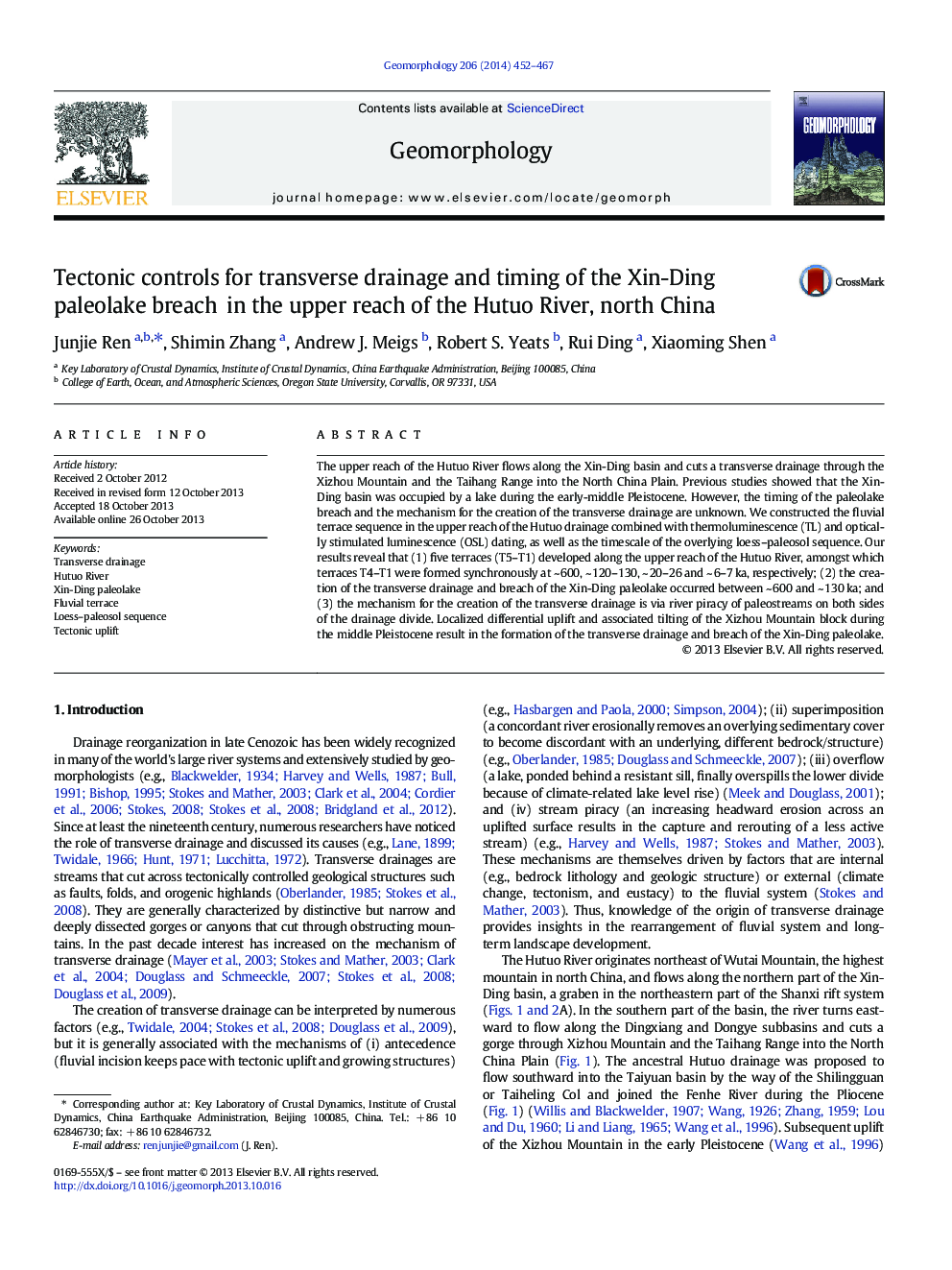| Article ID | Journal | Published Year | Pages | File Type |
|---|---|---|---|---|
| 4684675 | Geomorphology | 2014 | 16 Pages |
•We reconstruct fluvial terraces and drainage evolution in the upper Hutuo River.•The breach of the Xin-Ding paleolake occurred between ~ 600 and ~ 130 ka.•The creation of transverse drainage is related to river capture.•Localized differential tectonic uplift caused the paleolake breach.
The upper reach of the Hutuo River flows along the Xin-Ding basin and cuts a transverse drainage through the Xizhou Mountain and the Taihang Range into the North China Plain. Previous studies showed that the Xin-Ding basin was occupied by a lake during the early-middle Pleistocene. However, the timing of the paleolake breach and the mechanism for the creation of the transverse drainage are unknown. We constructed the fluvial terrace sequence in the upper reach of the Hutuo drainage combined with thermoluminescence (TL) and optically stimulated luminescence (OSL) dating, as well as the timescale of the overlying loess–paleosol sequence. Our results reveal that (1) five terraces (T5–T1) developed along the upper reach of the Hutuo River, amongst which terraces T4–T1 were formed synchronously at ~ 600, ~ 120–130, ~ 20–26 and ~ 6–7 ka, respectively; (2) the creation of the transverse drainage and breach of the Xin-Ding paleolake occurred between ~ 600 and ~ 130 ka; and (3) the mechanism for the creation of the transverse drainage is via river piracy of paleostreams on both sides of the drainage divide. Localized differential uplift and associated tilting of the Xizhou Mountain block during the middle Pleistocene result in the formation of the transverse drainage and breach of the Xin-Ding paleolake.
